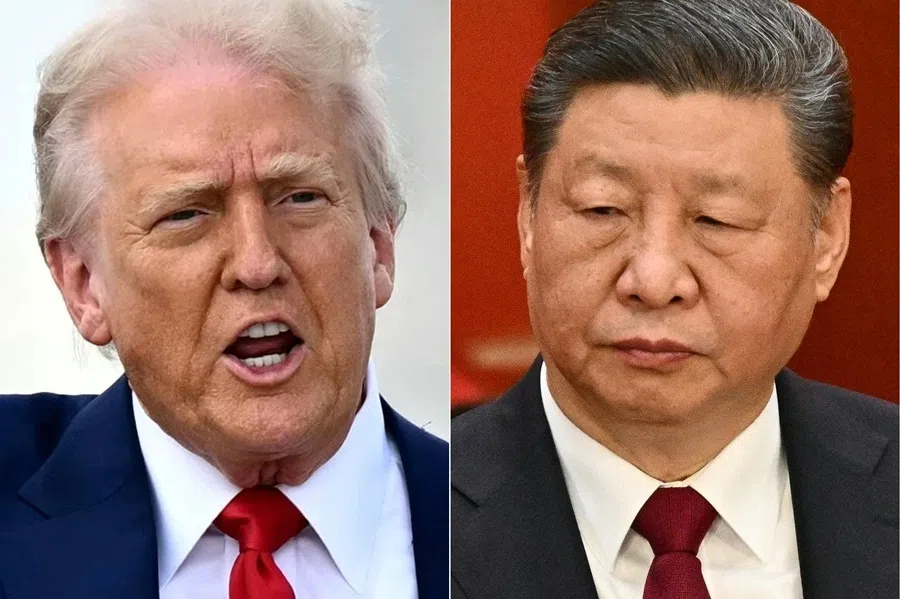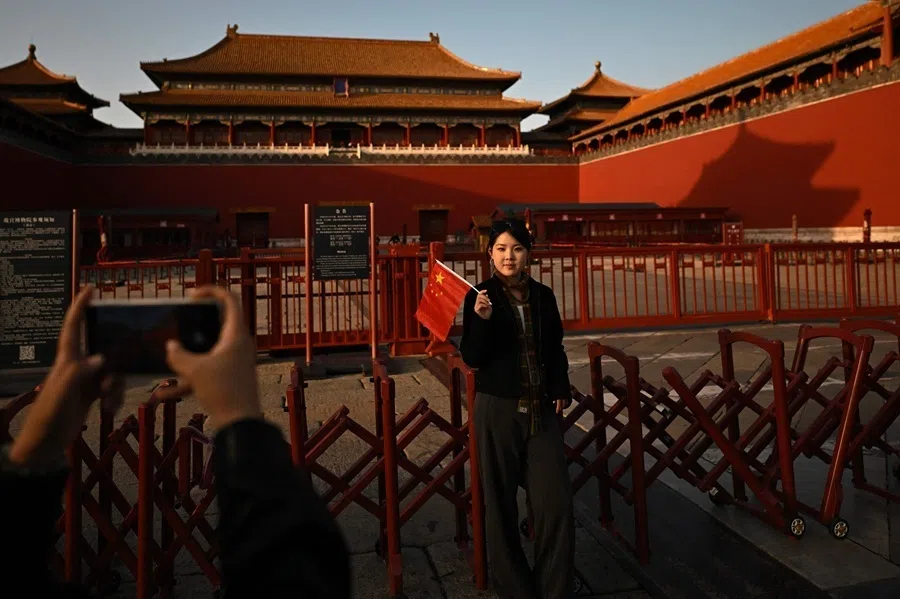Australia’s new China playbook: Engagement without illusion
Amid Australian Prime Minister Anthony Albanese’s efforts to reset Australia-China ties, his recent visit to China signalled a shared interest in pragmatic cooperation. With clear safeguards and steady leadership, Australia can deepen ties with China to foster growth and resilience, observes researcher Genevieve Donnellon-May.

Marking another important step in Australia-China ties, Prime Minister Anthony Albanese visited China, Australia’s largest trading partner, from 12 to 18 July. Over six days across three Chinese cities — Beijing, Shanghai and Chengdu — Albanese held his fourth meeting with President Xi Jinping, met Premier Li Qiang for their third Annual Leaders’ Meeting, and held talks with Zhao Leji, chairman of the National People’s Congress.
A key outcome was the agreement to review the decade-old China-Australia Free Trade Agreement (ChAFTA) to modernise the pact and adapt it to today’s economic realities. The joint outcomes statement laid out a broad agenda for deeper cooperation based on mutual respect, practical engagement, and expanded trade and investment.
Economic ties again took centre stage. New agreements covered key areas including smoother customs procedures, faster import approvals and improved market access for agriculture and seafood, as well as tourism. Both sides welcomed more two-way investment in renewable energy, resources and advanced manufacturing, alongside closer collaboration on digital trade, e-commerce and the green economy. Notably, a new bilateral policy dialogue on steel decarbonisation was launched to advance joint efforts to cut emissions in this strategically vital sector.
Thawing tensions
Australia-China ties have weathered a turbulent decade. The rupture began with Canberra’s 2018 ban on Huawei and ZTE from its 5G network, followed by allegations of Chinese interference and cyber-espionage. Tensions peaked in 2020 when then Prime Minister Scott Morrison’s call for an independent Covid-19 inquiry triggered sweeping Chinese trade sanctions on key Australian exports. The controversial 2021 AUKUS pact — entrenched strategic mistrust, reinforcing Beijing’s perception that Canberra was doubling down on US-led containment.
Yet Canberra’s security architecture remains firmly tied to Washington through ANZUS, the Quad and AUKUS, not to mention an expanding US military presence in northern and western Australia.
Since 2022, the Albanese government has cautiously steered relations back on track. The prime minister’s 2023 visit to Beijing and Canberra’s suspension of its appeal to the World Trade Organisation over Chinese tariffs helped lift Beijing’s final trade bans in 2024, unlocking over A$20 billion (US$13 million) in restricted exports. Chinese investment in Australia also rose 41% that year to US$862 million, mainly in mining, although still well below previous peaks.

The recent visit signals a shared interest in pragmatic cooperation. Interest from the Chinese side was made clear. Premier Li Qiang praised Albanese’s “personal efforts” to reset ties, Xi stressed the improvement in the relations between the countries while the Chinese media called it a “turnaround”.
Australia’s ongoing challenge: balancing the US and China
Australia continues to grapple with the delicate task of balancing deep economic interdependence with China against its enduring security alliance with the US. As a middle power with a resource-driven economy, Australia depends heavily on China, which has been its largest trading partner for 16 consecutive years. In 2023, China accounted for nearly one-third of Australian exports — over A$219 billion — with two-way trade reaching A$312 billion in 2024.
Yet Canberra’s security architecture remains firmly tied to Washington through ANZUS, the Quad and AUKUS, not to mention an expanding US military presence in northern and western Australia. This dual reliance demands careful calibration as US-China competition sharpens across the Indo-Pacific.
Tensions currently test this balance on both sides. With China, disputes over foreign interference and human rights — symbolised by the detention of Chinese-born Australian writer Yang Hengjun — persist. Beijing has also criticised Canberra’s tighter screening of foreign investment in critical minerals and Albanese’s pledge and election promise to reclaim control of a Chinese-leased port.
... Albanese reaffirmed Australia’s sovereign right to decide its own security policy — a signal that, despite pressures, Canberra intends to keep both relationships in careful balance.
Doubts about Washington’s reliability persist too. In April, the Trump administration imposed sweeping “Liberation Day” tariffs on 180 countries. This included a blanket 10% tariff on Australian exports — despite the existing free trade agreement that favours the US — while also rejecting Canberra’s push for exemptions. AUKUS also remains under Pentagon review, while Australia’s massive military commitments — driven by China’s own build-up — are subject to pressure from US Secretary of Defence Pete Hegseth to commit to higher defence spending.

Adding to concerns, during Albanese’s visit to China and amid fears that AUKUS and other agreements risk becoming bargaining chips, the Financial Times reported US under secretary of defence for policy Elbridge Colby privately pressed Australia and Japan to pre-commit to supporting the US in a (potential) future Taiwan Strait contingency. Australian media also noted the irony in the US expecting Australia to outline its position on an issue which the Americans have not addressed. In response, Albanese reaffirmed Australia’s sovereign right to decide its own security policy — a signal that, despite pressures, Canberra intends to keep both relationships in careful balance.
Improving Australia-China relations
With growing signs of US isolationism and transactional nature, Beijing is positioning itself as a stable economic partner for Australia and the region. This dynamic creates both opportunities and risks for Canberra, demanding pragmatic initiatives that deepen engagement while safeguarding national security and addressing domestic scepticism.
First, expanding bilateral research collaboration and joint working groups on shared priorities — such as renewable energy, climate change, science and technology — can spur innovation and address technical barriers, including under existing cooperation frameworks like the renewed memorandum of understanding on climate cooperation. Clean energy and decarbonisation remain promising pillars, alongside emerging sectors like artificial intelligence, healthcare innovation and the digital economy.
... Canberra should build on existing trade-related agreements to establish clear protocol while ensuring transparent communication about risks and safeguards within bilateral economic engagement.
Given concerns about national security, these initiatives should be clearly mandated and tightly overseen to protect sensitive sectors while maximising mutual benefit.

Second, facilitating business-to-business engagement through targeted trade forums, expositions and networking events can help Australian small and medium-sized enterprises better navigate Chinese markets. It can also help Australian companies build direct local partnerships in key sectors like agribusiness, clean energy, resources, and education services.
Clear safeguards and steady leadership needed
To mitigate concerns about potential Chinese economic coercion, Canberra should build on existing trade-related agreements to establish clear protocol while ensuring transparent communication about risks and safeguards within bilateral economic engagement.
Public concerns — fuelled by recent naval incidents, including live-fire drills near Australia’s maritime borders — must be acknowledged and credibly addressed by both sides. Australian Foreign Minister Penny Wong’s recent criticism of these drills to her Chinese counterpart on the side of the ASEAN Foreign Ministers’ meeting in Malaysia in July underscores the need for clear safeguards and consistent policy boundaries.
While only 17% of Australians trust China to act responsibly, viewing the relationship solely through a security lens risks distorting broader economic and strategic interests.
With clear safeguards and steady leadership, Australia can deepen ties with China to foster growth and resilience. Balanced engagement with Beijing — while maintaining a trusted alliance with the US — shows that protecting national security and strengthening economic ties with China are not mutually exclusive.



![[Big read] Prayers and packed bags: How China’s youth are navigating a jobless future](https://cassette.sphdigital.com.sg/image/thinkchina/16c6d4d5346edf02a0455054f2f7c9bf5e238af6a1cc83d5c052e875fe301fc7)

